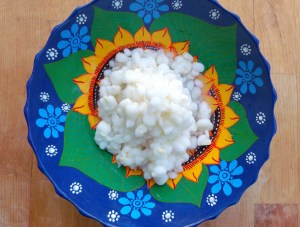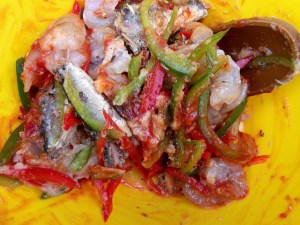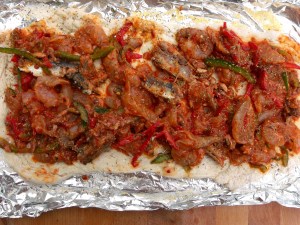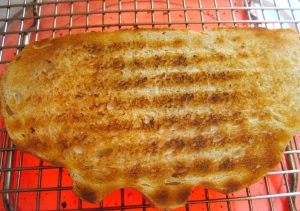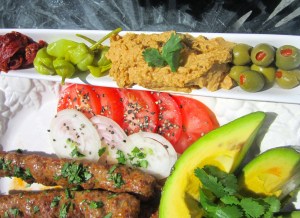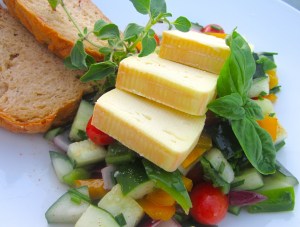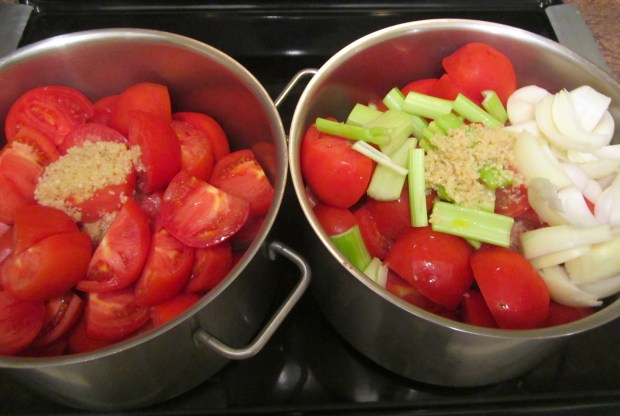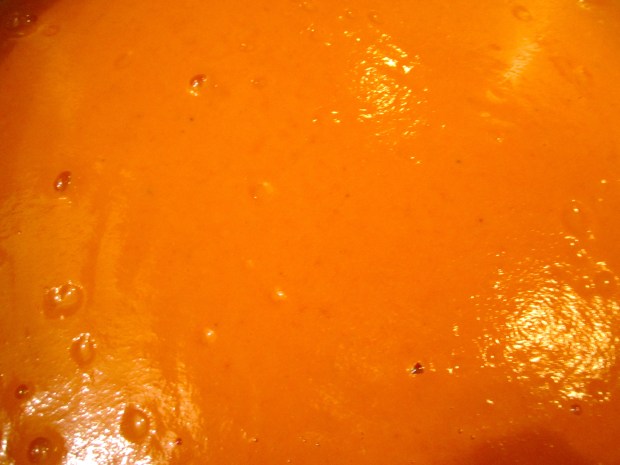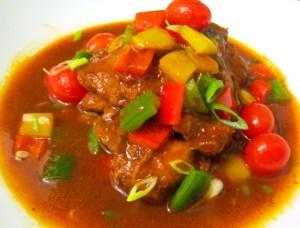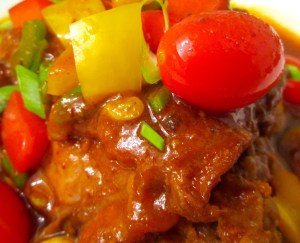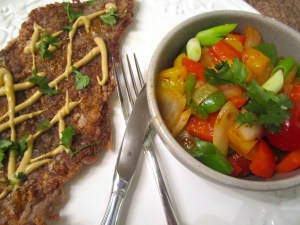>
>
Partial excerpts from Wikipedia:
“Pozole. Variants: pozolé, pozolli, pasole), which means “hominy”, is a traditional soup or stew from Mexico, which once had ritual significance. It is made from hominy, with meat (typically pork), and can be seasoned and garnished with shredded cabbage, chile peppers, onion, garlic, radishes, avocado, salsa and/or limes.
It is a typical dish in various states such as Sinaloa, Michoacán, Guerrero, Zacatecas, Jalisco, Morelos, State of Mexico and Distrito Federal. Pozole is served in Mexican restaurants worldwide.
Pozole is frequently served as a celebratory dish throughout Mexico and by Mexican communities outside Mexico. Common occasions include Mexico Independence Day, quince años, weddings, birthdays, baptisms, and New Year’s Day.
Pozole can be prepared in many ways. All variations include a base of cooked hominy in broth. Typically pork, or sometimes chicken, is included in the base. Vegetarian recipes substitute beans for the meat.
Dried hominy can be used for pozole, but it must be soaked and cooked
The three main types of pozole are blanco/white, verde/green and rojo/red.
White Pozole is the preparation without any additional green or red sauce. Green Pozole adds a rich sauce based on green ingredients, possibly including tomatillos, epazote, cilantro, jalapeños, and/or pepitas. Red Pozole is made without the green sauce, instead adding a red sauce made from one or more chiles, such as guajillo, piquin, or ancho.
When pozole is served, it is accompanied by a wide variety of condiments, potentially including chopped onion, shredded lettuce, sliced radish, cabbage, avocado, limes, oregano, tostadas, chicharrónes, and/or chiles.
Pozole was mentioned in Fray Bernardino de Sahagún‘s General History of the Things of New Spain (c. 1500). Since maize was a sacred plant for the Aztecs and other inhabitants of Mesoamerica, pozole was made to be consumed on special occasions. The conjunction of maize (usually whole hominy kernels) and meat in a single dish is of particular interest to scholars, because the ancient Americans(which?) believed the gods made humans out of masa (cornmeal dough).”
.
According to research by the Instituto Nacional de Antropología e Historia (National Institute of Anthropology and History) and the Universidad Nacional Autónoma de México, on these special occasions, the meat used in the pozole was human. After the prisoners were killed by having their hearts torn out in a ritual sacrifice, the rest of the body was chopped and cooked with maize, and the resulting meal was shared among the whole community as an act of religious communion. After the Conquest, when cannibalism was banned, pork became the staple meat as it “tasted very similar” [to human flesh], according to a Spanish priest.“
>
Bon Appétit ! Life is Good !
>
>
>
>
>
>
>
Preparation :
To read instructions, hover over pictures
To enlarge pictures and read instructions, click on pictures
>
>
>
- cook a whole med size chicken with 4 scallion stalks, 1 large peeled onion, kosher salt o taste and one tsp dried oregano in 2 qt water until chicken is tender, remove chicken and set aside; there should be 1 qt stock remaining – check/adjust seasoning
- remove meat from carcasse, shred and divide into 4 soup bowls
- drain and rinse one 12 oz can of homini, add to the chicken
- according to your preference, add chopped tomatoes, sliced avocados, sliced chilies, shredded cabbage, chopped cilantro and chopped fresh oregano to the bowls, (or any other condiment mentioned in the intro), top with the chicken broth, serve with fresh lime
- Pozole
- Pozole
- Pozole
- Pozole
>
>
>
>





